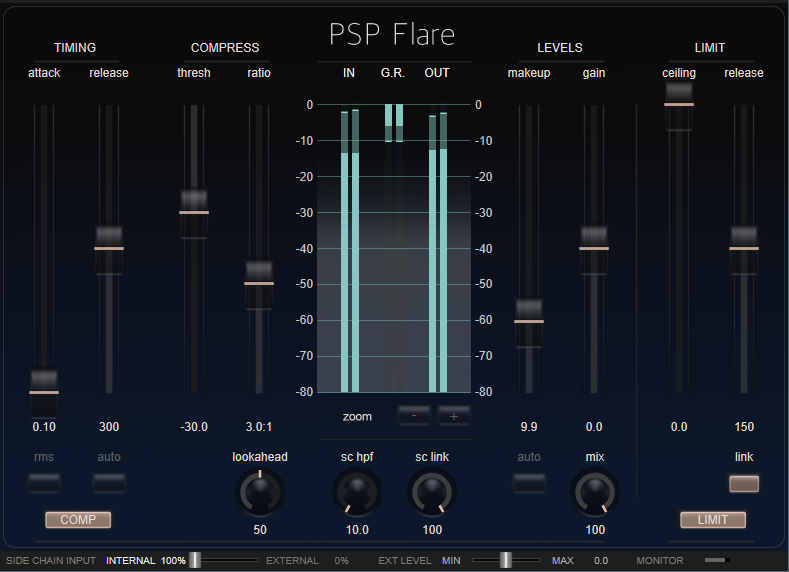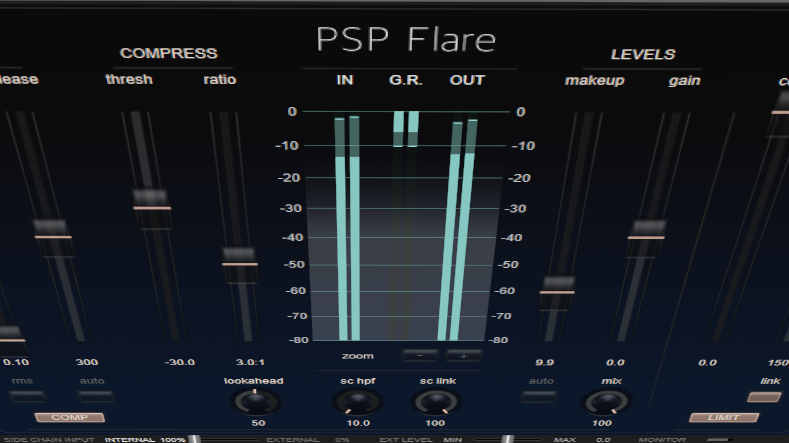With so many software companies offering free trial versions, there’s not much point in reviewing software. Who cares what a reviewer thinks, when you can hear something with your ears and make your own decisions?
But then there’s PSP Flare, and I’m reviewing it as a public service because it really is a different type of dynamics processor. Sure, it’s a compressor+limiter, but it sure doesn’t act like other ones I’ve tried.
For context, I recently did a blog post called Why I don’t Use Compressors Anymore. Basically, to my ears compressors suck.They take away punch and add weird breathing effects between transients. Granted, you can use series compressors, set for high thresholds and low ratios, for subtle processing to enhance program material. But Chris Lord Alge-type heavy compression is not my thing.
However…
I ran into Antoni from PSP Audioware at NAMM, and he told me about a new type of compressor they’d developed. Sure. Uh-huh. New compressor. Right. But, because it was PSP Audioware, it got my attention. As a small Polish company that doesn’t have the marketing clout of the Big Guys, they often fly under the radar. Yet their plugins can stand with the rest of them, and in some cases, above them.
Here’s what the interface looks like. The controls are what you’d expect—but the sound is not.

If you’re familiar with dynamics processors, your learning curve will be next to nothing. All the controls are familiar and effective.
THE ACID TEST
One area where I do like compression Is as an effect, to bring up room sound in drum loops that don’t have much built-in room ambience. I mix this in parallel with the dry loop. This application requires an instant attack, because you don’t want the compressed transient to interfere with the dry drums. It also needs a super-low threshold and moderate ratio. As mentioned, you can download the 30-day trial for yourself and find out why I’m impressed, but these audio examples of the room sound track speak for themselves. Both have 0.1 ms attack, -30 threshold, and 3:1 ratio. Both are normalized to the same level.
THE VERDICT
As I said, this is kind of a public service because it would be so easy to think ok, another compressor [yawn], and just pass it by. But that would be a mistake if you’re into compressors…and more of a mistake if you’re not. Flare provides what I like about compression, but minimizes or even eliminates what I don’t like. I have no idea what kind of mojo is going on under the hood, but it’s impressive.
Given that Flare is $99, and you probably have more compressors than you can count, it may not seem worth the expense. But the trial download is 30 days, and that’s enough time to try Flare out on a variety of material to find out for yourself why it’s not “just another compressor.” I can also vouch that it’s enough time to become addicted.
I guess I’ll have to change my blog post title to “Why I Don’t Use Compressors Anymore…Well, Except for One.”
